Table of contents
Mung bean sprouts are germinated mung beans ( Vigna radiata ) that can be eaten raw or cooked. Their mild, sweet taste allows for a wide range of uses. Use organic beans for sprouting.
Use in the kitchen
Mung bean sprouts look similar to soybean sprouts (soy sprouts), but have a milder taste. They taste slightly sweet and have a crunchy texture when raw. They have a wide variety of uses in the kitchen: you can enjoy them raw or cooked and use them to enrich salads, soups and stews. Mung bean sprouts are also a component of many typical Asian wok dishes. In gourmet cuisine, sprouts are often found as a side dish. When cooking cooked dishes, it is advisable to add the sprouts at the end of the preparation to maintain their crunchy consistency.
The question often arises : Can you eat mung bean sprouts raw? or Are mung bean sprouts poisonous when raw? Germinated mung bean sprouts can be eaten raw (raw food quality!). However, you should make sure that the sprouts are in a hygienically perfect condition and wash them thoroughly with water before eating. More on this in the chapter "Danger - Intolerances - Side Effects".
In Chinese cuisine, mung bean sprouts are an important ingredient in dishes such as the wok noodles "Chow Mein" or "Chop Suey", which consists of various vegetables such as bamboo shoots and mushrooms, including shiitake mushrooms and button mushrooms . It is served with rice or noodles (eg rice noodles ). Mung bean sprouts or sprouts can also be found in the filling of spring rolls, along with carrots, glass noodles and other ingredients.
Mung bean sprouts are also used as a garnish for Pho (Phở, a traditional Vietnamese soup) and as a filling for Vietnamese summer rolls, which, unlike spring rolls, are not fried. As a fresh ingredient, they are suitable for preparing salads such as the Thai "Yam Tua Poo", which uses Goa beans (pods) in addition to the bean sprouts.
In Korean cuisine, lightly cooked mung sprouts are served as a side dish, called "sukju namul". They are blanched briefly before being mixed with sesame oil, garlic, salt and other ingredients. They are found as an ingredient in the dish "bibimbap", a typical leftover meal that traditionally consists of rice, various vegetables, some beef or tofu and a fried egg.
In the Philippines, mung bean sprouts are used to make "lumpiang togue," a meatless spring roll with mung bean sprouts, known as "togue," as the main ingredient. In India, where mung beans are a staple food and an important source of protein, the sprouts are often cooked with green chili, garlic, and other spices, and are used as a topping for curries and stews. In Indonesia, mung bean sprouts are used as fillings for "tahu isi" (stuffed tofu ), as well as a complementary ingredient in dishes such as "nasi rawon" or "soto," a traditional Indonesian soup.
Making your own mung bean sprouts
How do you grow mung bean sprouts? If you want to make your own mung bean sprouts or mung bean sprouts at home, only buy intact, whole mung beans and make sure they are organic. Peeled, halved or broken seeds ( Moong Dal ) are no longer capable of germinating! You will also need a bowl, sieve, sterilized glass (germination jar) / germination bag or sprouting tower.
Note that sprouted mung beans reach five to seven times their dry volume.
Proceed:
- Wash a cup of green (yellow or black) mung beans thoroughly and place them in a large bowl. Allow the seeds to soak in plenty of water for about 8 to 12 hours, preferably overnight. The water level should be at least twice as high as the mung beans in the container, as the beans almost double in volume when they soak.
- Sort out mung beans that have not swollen or use all of them straight away. A preserving jar is ideal for germinating mung beans. A piece of cloth can be used as a cover. The cover can be easily attached to the jar using a rubber band. Alternatively, a germination bag or a germination jar and a sieve can be used (see "Multi-layered sprouts" below). Modern germination devices save time. They automatically ensure a regular supply of water and air, but due to the price, they are only worthwhile if used frequently.
- If you don't have a germination device, make sure you rinse the sprouts with lukewarm water two to three times a day. The mung sprouts should stay moist, but not lying in water, otherwise mold will form. As dark germinators, mung beans need sufficiently dark conditions to germinate. To begin with, they should be placed in a dark place, as light prevents the germination process. Once the first sprouting heads have formed, they can be placed in a slightly brighter place. However, too much light makes the sprouts bitter.
The ambient temperature should ideally be between 18 and 22 °C. How long do mung bean sprouts take to germinate? The germination time is 3 to 4 days. It is best to check while watering and harvest as soon as the sprouts are ready. Depending on whether you want to get seedlings or sprouts, they will need a little longer. A longer germination time causes a purple color, the sprouts have a bitter taste and are no longer as tender.
Multi-layered sprouts with a colander:
After soaking overnight, place two layers of kitchen paper in a colander and spread some of the mung beans on top. Place a new kitchen paper on top and spread the swollen mung beans on top again. The beans can be in several layers in the colander and up to three layers of kitchen paper are possible. At the end, place another layer of kitchen paper on top and cover with a damp cotton or kitchen towel. Cover the colander with a lid to ensure a moist environment. Place the germination structure in a dark place or in an opaque container (a dark plastic bag is also suitable). If too much light reaches the growing mung bean sprouts, the cotyledons will form too quickly and the sprouts will stop growing. The kitchen towel should be moistened about three times a day and it is important that no water collects in the container. 1
The following article will give you a closer look at the topic of phytic acid or phytate and soaking or sprouting .
Vegan recipe with mung bean sprouts from the wok
Ingredients: 300 g mung bean sprouts, 2 spring onions, 1 chili pepper, 1 tbsp soy sauce, 1 tsp sesame oil, ½ tsp brown sugar, 1 tbsp rapeseed oil, sea salt .
Preparation: Wash the mung bean sprouts thoroughly with water and drain well. Remove the seeds from the chilli pepper and chop finely, cut the spring onion into rings. Mix the sugar, sesame oil and soy sauce together as a seasoning sauce and leave to simmer. Heat the rapeseed oil in a wok and fry the sprouts, onion rings and chilli until crispy, stirring constantly. Then stir in the seasoning sauce and let it simmer briefly. Season with a little salt if necessary. Garnish with peanuts or sesame seeds if desired.
Vegan recipes with raw mung bean sprouts can be found under the note: " Recipes that have the most of this ingredient ".
| Not only vegans or vegetarians should read this: Vegans often eat unhealthily. Avoidable nutritional errors . |
Purchasing - Storage
Mung bean sprouts are available in well-stocked supermarkets such as Coop, Migros, Spar, Rewe, Billa or Edeka, sometimes even in organic quality. Aldi, Lidl, Denner, Hofer, Volg, etc. also stock them from time to time. In any case, you can find mung bean sprouts in natural food stores, in well-stocked health food stores, larger organic supermarkets ( Alnatura, Denn's Biomarkt etc.), Asian shops or online shops. Some offer them under the non-specific name "bean sprouts". Mung bean sprouts are often mistakenly sold as soy sprouts, even if they are not.
You can also buy mung bean sprouts in a jar in brine, which has the advantage that they last longer. However, we recommend growing the sprouts yourself or buying them fresh, as pickled products are no longer raw but sterilized using heat.
When buying mung bean sprouts, it is important to pay attention to their freshness. Choose sprouts that are crisp and light green. Wilting and discoloration indicate older goods.
The availability of mung bean sprouts (raw) varies depending on the size of the store, catchment area, etc. Our recorded food prices for the DA-CH countries can be found above under the ingredient image - and by clicking on them you can see their development at various suppliers.
Storage tips
Purchased or home-grown mung bean sprouts can be stored in a tightly sealed jar in the refrigerator. It is best to rinse them briefly with water every day and then put them back in the refrigerator. Breaking the cold chain can be dangerous. Therefore, always keep a close eye on purchased items and open the plastic bag or foil immediately after purchase, rinse the mung bean sprouts and, if not consumed immediately, store them back in the refrigerator.
Fresh mung bean sprouts can be kept for 5-7 days without any loss of quality. Alternatively, you can freeze them, which will make them last much longer. However, once thawed, they are no longer crispy and can only be used in cooked dishes. Purchased sprouts in brine will keep in a sealed jar for several months to a year.
Ingredients - Nutritional values - Calories
Mung bean sprouts are a low-calorie, low-fat ingredient with 30 kcal/100g. Carbohydrates make up around 6% and around a third of them arefiber . The fat content is almost zero and the protein content is around 3%. The sprouts contain many vitamins and minerals.
Mung bean sprouts are relatively rich in vitamin K with 33 µg/100g, while raw mung bean seeds only have 9 µg/100g. Germinated alfalfa seeds have similar values to the sprouts with 30 µg/100g. Green vegetables, salads and herbs, such as fresh parsley (454 µg/100g), chard (830 µg/100g) and kale (705 µg/100g), have particularly high levels of the fat-soluble vitamin.
Folic acid occurs in pulses as a precursor in the form of folate (folic acid-active substance group): The folate content in mung bean sprouts is 61 µg/100g, and in dried mung beans it is 625 µg/100g. The folate content increases at the beginning of the germination process: the highest folate value was measured in germinated mung beans after 4 days, after which it decreased again. 19 However, it decreases when cooked (see the link to folic acid above). The figures for dried bean seeds, mung bean sprouts and cooked mung bean seeds are not directly comparable due to the different water content.
Brussels sprouts or red chicory (radicchio) are on par with mung bean sprouts in terms of their folic acid content.
The vitamin C content of mung beans (4.8 mg/100g) can more than double to 13 mg/100g in the sprouts during the germination process. These values are not very high, but are comparable to those of leeks or cherry tomatoes . The ascorbic acid in strawberries is much higher at 59 mg/100g. Sea buckthorn berries have an extremely high level of the water-soluble antioxidant at 450 mg/100g. 2
The complete ingredients of the mung bean sprouts (raw), the coverage of the daily requirement and comparison values with other ingredients can be found in our nutrient tables. In the article Nutrients explained you will get a detailed insight into the topic.
Health Effects
How healthy are mung bean sprouts? Mung beans have a low glycemic index (GI) and also have antidiabetic effects. The antihyperglycemic effect is evident in the reduction of blood sugar levels. Studies have shown that consumption of low GI foods helps reduce the complications and incidence of diabetes and obesity. 3 Supplementation of mung bean sprouts has also been associated with improving lipid metabolism through hypolipidemic properties in mice. 4 The sprouts have also been shown to be an effective antihypertensive agent. For example, a reduction in systolic blood pressure was observed in rats when mung bean sprout extract was administered via the stomach, highlighting the potential of mung bean sprouts in the prevention and treatment of hypertension. 3
Germination improves not only the pharmacological effect but also the nutritional properties of mung beans. 3 Germination reduces the content of indigestible triple sugars. The two sugars raffinose and stachyose decompose completely. This means that mung sprouts do not cause flatulence and are considered very digestible. At the same time, the concentration of antinutrients contained in the beans is also reduced. The activity of the hemagglutinins, which also include lectins, decreases by around 84.4% after 3 days of germination, which means that the sprouts can be eaten raw compared to whole beans. The total content of organic acids increases during germination. 5
Secondary plant substances
Many of the health effects of mung bean sprouts can be attributed to the secondary plant substances they contain. Our article on secondary plant substances provides an overview of the classification of substance groups, their occurrence in foods and possible effects on humans.
The concentration of secondary plant substances in mung beans can change during the germination process and is subject to various influencing factors. 5,19 Therefore, we describe the ingredients of ungerminated mung beans here. These contain the following secondary plant substances: 3,5,18
- Isoprenoids: Tetraterpenes: Carotenoids (beta-carotene, alpha-carotene, beta-cryptoxanthin); Triterpenes (saponins, sterols); Triterpenoid (feruloyl-beta-sitosterol); Chalcones (phloretin)
- Alkaloids
- Polyphenols: Flavonoids: Isoflavones (Daidzein, Genistein, Glycitein, Formononetin, Biochanin A, Genistin, Pomiferin, Prunetin, Ononin, Sissotrin), Flavonols (Kaempferol, Myricetin, Quercetin, Rhamnetin, Kaempferitrin, Rutin, Isoquercitrin), Flavanones (Naringenin, Naringin, Eriodictyol, Neohesperidin), Flavones (apigenin, luteolin, hypolaetin, vitexin, isovitexin), flavanols (catechin, epicatechin), anthocyanidins (delphinidin); coumestane (coumestrol); Coumarins (scopoletin, scopoline); Phenylpropene: Rhododendrine; tannins; Phenolic acids: hydroxybenzoic acids (ellagic acid, protocatechuic acid, gallic acid, vanillic acid, gentisic acid, 4-hydroxybenzoic acid, syringic acid, shikimic acid); hydroxycinnamic acids (cinnamic acid, p-coumaric acid, caffeic acid, ferulic acid, chlorogenic acid, feruloyl glucose)
- Organic sulfur-containing compounds: cysteine
- Protease inhibitors: phytic acid
However, it should be noted that the composition of secondary plant substances in mung bean sprouts can vary depending on the variety, time of harvest and growing conditions. Therefore, quantities are only of limited use and should only be understood roughly.
Studies show that the chemical composition of mung beans also changes during germination. Compared to raw seeds, mung bean sprouts have a higher antioxidant potential than raw seeds. They have a significantly higher amount of secondary metabolites, such as polyphenols. Their high content of nutrients (vitamins, proteins, polysaccharides, etc.) and a wide range of secondary plant substances makes them an excellent source of antioxidants, which provide protection against free radicals. 3,5
According to studies, mung beans and their sprouts have the potential to modulate or prevent chronic degenerative diseases, including arthritis, Alzheimer's, diabetes, cardiovascular disease and cancer. These health benefits are not only due to their nutrient density, but also to the effects of their phytochemicals. In particular, flavonoids such as vitexin and isovitexin, which belong to the subgroup of flavones, contribute to these effects. The bean sprouts exhibit anti-inflammatory, antiviral, antifungal, antibacterial and liver-protective effects. They are also suitable as an anti-cancer and immunomodulatory agent, opening up possible new perspectives for cancer therapy. 3,5
Dangers - Intolerances - Side effects
Sprouts are very susceptible to germs because the warm, moist environment they need to grow attracts not only mold but also dangerous bacteria (salmonella: Salmonella and listeria: Listeria monocytogenes ). Hygiene is therefore particularly important when growing sprouts. This includes perfectly clean sprouting equipment (boiled with water), clean hands and surroundings (kitchen table) and frequent rinsing of the sprouts with clean water. If there is mold, remove all of the seeds! 6
In 1996, sprouts were the cause of a dramatic EHEC epidemic in Japan, which affected 10,000 people. Although this diarrheal disease could never be clearly identified, it is assumed that contaminated sprouts were the cause. The enterohemorrhagic Escherichia coli bacteria ( E. coli ) often cause bloody diarrhea and can lead to kidney failure in severe cases. 6
In 2011, there was also an EHEC epidemic in Germany, where it was discovered that sprouts were carriers of pathogens. Fenugreek seeds from Egypt were suspected to be the cause. 6,7
Stricter regulations on hygiene during breeding, export and processing are intended to remedy the situation. Treating the seeds with hydrogen peroxide before sowing could help to kill such pathogenic germs. 8 According to EC Regulation No. 834/2007, hydrogen peroxide is permitted as a disinfectant in organic farming, but it is not permitted for the processing of foods of plant origin. 9
Harvard University 's Department of Environmental Health & Safety advises that purchased sprouts should be consumed as quickly as possible and heated sufficiently to kill the harmful bacteria and reduce the risk of illness. Children, the elderly, pregnant women, and people with weakened immune systems should avoid eating raw sprouts of any kind altogether. 10
Folk medicine - natural healing
In traditional Chinese medicine ( TCM ), the functional area of mung beans includes the heart, stomach, liver and intestines. Their temperature behavior is cold and their taste is sweet. In TCM, they are used, among other things, to eliminate toxins and to remove heat.
Ecological footprint - animal welfare
The Danish climate database Concito puts the CO 2 footprint of mung bean sprouts at 0.9 kg CO 2 eq/kg, one third of which is due to transport. Since mung beans are mostly grown in Asia, Europe is dependent on importing them and the associated transport routes. In comparison: lentil sprouts ( germinated lentils ) produce 2.38 kg CO 2 eq/kg. Legumes produce significantly fewer greenhouse gases than meat: beef has an average ecological footprint of 61.04 kg CO 2 eq/kg. 11
We were unable to find any information on the water footprint of mung bean sprouts. However, it can be assumed that it is comparable to that of mung beans. A study from Thailand determined an average water consumption of 2980 l/kg. Depending on the region, the values fluctuated between 1549 and 6445 l/kg during the dry season. In the rainy season, mung beans did not require any water. 12 Results from Ethiopia show a water footprint of 6561 l/kg, which is comparable to the highest value in the Thai study. 13 You can find more details under the ingredient mung beans .
The results show that the water requirements of mung beans can vary greatly in different regions due to many factors. The differences between the two studies arise from differences in geographical location and resulting climatic conditions, plant species, growth periods, soil parameters, water availability and other influencing factors. 13
For comparison: vegetables have a water footprint of 300 l/kg and grains 1600 l/kg. Spices have an even higher water requirement of around 7000 l/kg. 14
For detailed explanations of various sustainability indicators (such as ecological footprint, CO2 footprint, water footprint), see our article: What does the ecological footprint mean? .
Fabaceae, including mung beans, form a symbiotic relationship with nodule bacteria that can fix nitrogen from the air and make it available to plants. These legumes thus perform an important function for many ecosystems, but also for agricultural soils, in the form of so-called "green manure". Mung beans are therefore not dependent on nitrogen inputs and environmentally harmful nitrogen fertilizers can be avoided when grown. 15,16
Worldwide occurrence - cultivation
About 3500 years ago, mung beans were cultivated throughout India, after which cultivated mung beans spread to China and Southeast Asia. 3 Today, they are grown on more than 6 million hectares worldwide (about 8.5% of the global pulse area). 18
The mung bean is a warm-season legume with a short life cycle (approx. 60 days). However, it grows in frost-free areas over a wide latitude, as its optimal temperature is above 15 °C. This means that the mung bean has a large cultivation area, which extends from Asia to Africa, South America and Australia. 17 As it is particularly popular in Asian households, the main cultivation areas are in China, India, Bangladesh, Myanmar and Pakistan. However, its production can also be found in dry regions of southern Europe, in warmer parts of Canada and in the USA. 18
You can find out more about cultivation under the ingredient mung beans .
Possible confusion
Mung beans are related to soybeans ( Glycine max ). Their similar-looking sprouts are often offered under the wrong name. For example, mung bean sprouts are often sold as soybean sprouts, even if they are not.
The mung bean is also closely related to the urd bean ( Vigna mungo ), which is also known as the lentil bean. The usually black and oval seeds of the urd bean (black gram 20 ) can also be green in color. A key distinguishing feature from mung beans is the white color inside. Mung beans are yellowish inside.
Further information
The mung bean, also known as mung bean, Jerusalem bean or lunja bean ( Vigna radiata L.), is a plant species from the subfamily Faboideae within the legume family Fabaceae. This also includes soybeans, borlotti beans, kidney beans, black beans, white beans, lentils and many more.
The numerous types of mung bean are divided into 3 varieties: Vigna radiata var. typica is the best known variety and refers to the green mung beans. In English-speaking countries the name "green gram" is used. The variety Vigna radiata var. aurea refers to the yellow mung beans, also known as "golden gram". The seeds of Vigna radiata var. grandis are black (but not called "black gram", see above). 20
Alternative names
In English, mung bean sprouts (mung bean sprouts, mungo sprouts) are known as mung bean sprouts or bean sprouts. Mung beans are also called moong beans. One often comes across the term mung bean sprouts or mung sprouts, which is incorrectly used as a synonym.
Are mung bean sprouts and seedlings the same? The difference between sprouts and seedlings is the stage they are in. Seedlings are germinated seeds. The seedling is still very small and has not yet developed cotyledons. Sprouts are those young shoots of plants in which small cotyledons are already visible. Botanically speaking, they are called seedlings.
It is similar with "micro vegetables" or "microgreens": sprouts are not yet so-called "microgreens" because they are small plants in which the cotyledons are clearly visible and already green. Similar to garden cress ( Lepidium sativum L.). 21
In Chinese, the sprouts are called Taogé and in Japanese, Moyashi. In Thailand, mung bean sprouts are known as Thua Ngok and the Indonesian name is Kecambah Kacang Hijau.
Bibliography - 21 Sources
| 1. | Thai-thaifood de: Mungobohnensprossen ziehen. |
| 2. | USDA (United States Department of Agriculture). Nährwerttabellen. |
| 3. | Ganesan K, Xu B. A critical review on phytochemical profile and health promoting effects of mung bean (Vigna radiata). Food Science and Human Wellness. 2018;7(1):11-33. |
| 4. | Yao Y, Chen F, Wang M, Wang J, Ren G. Antidiabetic activity of Mung bean extracts in diabetic KK-Ay mice. J Agric Food Chem. 2008;56(19):8869–8873. |
| 5. | Tang D, Dong Y, Ren H, Li L, He C. A review of phytochemistry, metabolite changes, and medicinal uses of the common food mung bean and its sprouts (Vigna radiata). Chemistry Central Journal. 2014;8(1):4. |
| 6. | Sprossen-keimlinge de: Gefahren des Sprossenanbaus. |
| 7. | BfR Bundesinstitut für Risikobewertung. EHEC-Ausbruch 2011. Aufklärung des Ausbruchs entlang der Lebensmittelkette. 2011/04. |
| 8. | Gennert C. Reduzierung der mikrobiellen Vorbelastung von Keimsaaten durch den Einsatz von Wasserstoffperoxid. Bachelorarbeit im Studiengang Ökotrophologie. Hochschule für angewandte Wissenschaften Hamburg. 2017. |
| 9. | Verordnung (EG) Nr. 889/2008 der Kommision vom 5. September 2008 mit Durchführungsvorschriften zur Verordnung (EG) Nr. 834/2007 des Rates über die ökologische/biologische Produktion und die Kennzeichnung von ökologischen/biologischen Erzeugnissen hinsichtlich der ökologischen/biologischen Produktion, Kennzeichnung und Kontrolle. Anhang VII: Reinigungs- und Desinfektionsmittel, M15. |
| 10. | Harvard University Environmental Health & Safety. CDC Alert: Mung Beans Sprouts. |
| 11. | Concito. The Big Climata Database. Version 1.1. 2024. |
| 12. | Gheewala SH, Silalertruksa T et al. Water Footprint and Impact of Water Consumption for Food, Feed, Fuel Crops Production in Thailand. Water. 2014;6(6):1698–1718. |
| 13. | Gebremariam FT, Habtu S, Yazew E, Teklu B. The water footprint of irrigation-supplemented cotton and mung-bean crops in Northern Ethiopia. Heliyon. 2021;7(4):e06822. |
| 14. | Mekonnen MM, Hoekstra AY. The green, blue and grey water footprint of crops and derived crop products. Hydrol. Earth Syst. Sci. 2011; 15: 1577-1600. |
| 15. | Madigan MT, Bender KS, Buckley DH, Sattley WM, Stahl DA, Brock TD. Brock biology of microorganisms. Fifteenth edition, global edition. New York: Pearson; 2019. |
| 16. | Nadi F. Presenting a new approach for energy-exergy-environmental-economic evaluation of agroecosystems: a case study of the mung bean crop rotation. Clean Techn Environ Policy. 2023;25(10):3437–3450. |
| 17. | Kim SK, Nair RM, Lee J et al. Genomic resources in mungbean for future breeding programs. Front Plant Sci. 2015;6:626. |
| 18. | Hou D, Yousaf L et al. Mung bean (Vigna radiata L.): bioactive polyphenols, polysaccharides, peptides, and health benefits. Nutrients. 2019;11(6):1238. |
| 19. | Shohag MJI, Wei Y, Yang X. Changes of folate and other potential health-promoting phytochemicals in legume seeds as affected by germination. J Agric Food Chem. 2012;60(36):9137-9143. |
| 20. | Justus-Liebig-Universität Giessen. Mungbohne (Vigna radiata [L.] Wilczek [= V. aureus (Roxb.) Hepper, = Phaseolus radiatus L., = Ph. aureus Roxb.]). |
| 21. | Plantura.garden: Sprossen: Begriffserklärung, geeignete Sorten & gesundheitliche Vorteile. |

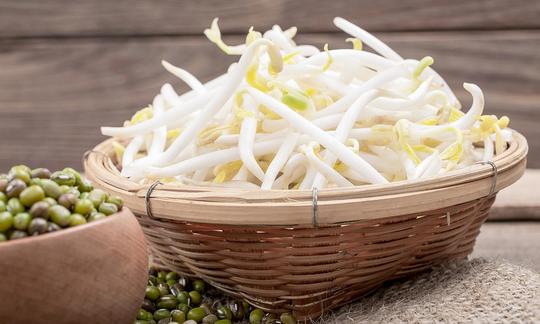

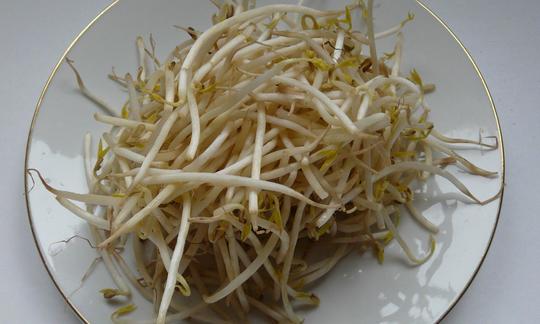

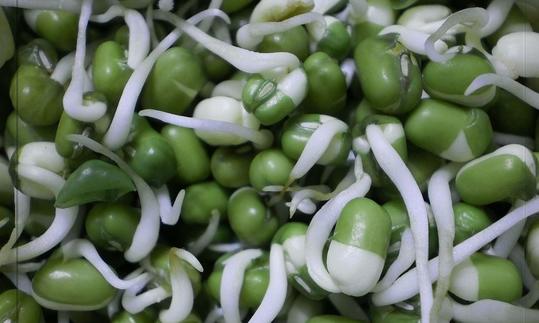

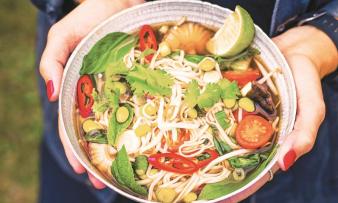
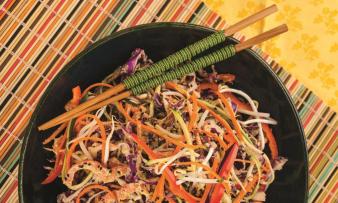
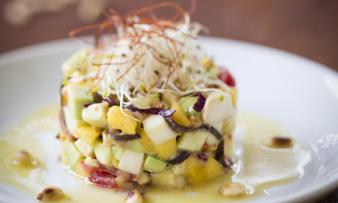





Comments